Sixty years back in time
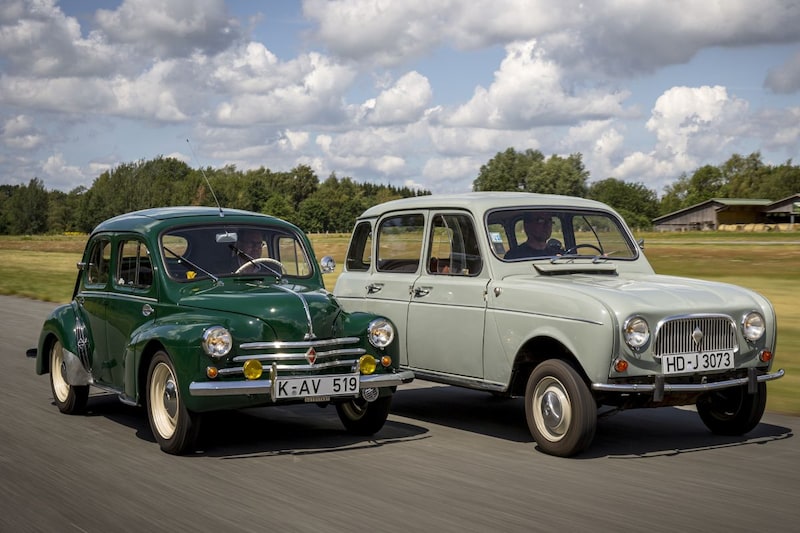
The Renault 4 was in production from 1962 well into the 1980s. He succeeded the cuddly 4CV. How big was the transition from the 4CV to the R4? The 4CV with its engine in the back looks nicer at first glance. But there is more to its successor R4 with its ingenious design.
Butter cube (motte de beurre) is what the salon visitors call it when Renault unveils the 4CV in Paris in 1946. The reason for this is the compact shape and the light yellow paint, with which the factory from Billancourt kills two birds with one stone: not only does the car stand out nicely among all the black standard sausages, but also the large amounts of paint that the German occupier used after the capitulation has left for their Africa Corps vehicles a recovery operation. The Germans – to be precise, the Saarlanders who were linked to France in a customs union until 1959 – come up with a more appetizing nickname for the 4CV: Cremeschnittchen, say tompoes.

Renault 4CV, immediately called butter cube, nicknames for cars were clearly popular in the past.
Development 4CV starts in 1942
The development of the 4CV (pronounced: katsjevoo) starts in 1942, during the German occupation. The project is top secret. However, the claim that Ferdinand Porsche had a hand in this project must be relegated to the realm of fables. It is true that during his French imprisonment (from the end of 1945) some prototypes were presented to him, which he approved, but he had nothing to do with the resemblance to the Beetle. On closer inspection, the resemblance isn’t even that strong. Unlike the Volkswagen, for example, the Renault has four doors. The front ones are designed as ‘suicide doors’, so hung on the b-pillar. And although its engine is in the back, it is not a boxer and, moreover, it is water-cooled instead of air-cooled.
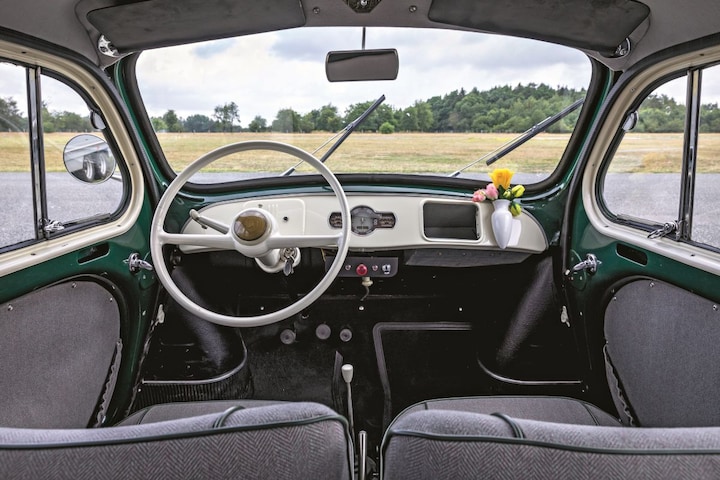
Engine behind the rear axle
Because the 748 cc small power source hangs behind the rear axle like an outboard motor, none of the space for passengers is lost from the wheelbase of 2100 mm. Despite the short length of the car, they also have sufficient space in the back. But the position of the 21 hp, hoarse-sounding four-cylinder leads to an unfavorable weight distribution. Of the 623 kilograms total weight, two-thirds presses on the rear axle. As a result, the ass soon wants to break out. Careless acceleration can quickly end in a pirouette, a danger that is all the greater because there is no indication that you are approaching the limit of grip. Even in fast corners, the butter lump keeps grip and hardly moves in its feathers.

Renault placed the engine behind the rear axle, just like Volkswagen did with the Beetle.
You start with a pull rod between the front seats. With a small lever you choose one of the three forward gears, the first of which is unsynchronised. In the traffic of the 1950s, the 4CV might have enjoyed playing along, but nowadays you can almost get out to pick flowers during the acceleration time of 28.9 seconds that the dwarf needs to reach 80 km / h (!) for the dashboard vase.
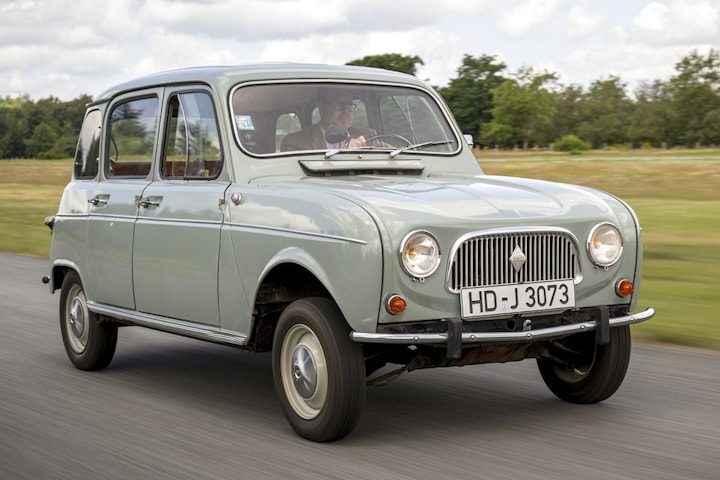
An early Renault 4, this model would be available well into the 1980s and underwent few changes in appearance.
The Renault 4 is slightly less slow
The three hp stronger R4 ‘sprint’ 2.4 seconds faster. But even his capital is now only sufficient for tourist trips to the countryside in not too hilly areas. You do have driving pleasure, thanks to the special umbrella stick circuit. If you pull the rod, you have moved from first to second gear. If you slide it forward again, the button will tilt halfway to the right, after which you will be in third gear.
Lean like a duck
The R4 tackles fast corners with a Duck-like lean. Incidentally, just like with that Duck, there is no danger of overturning. The soft suspension confirms all the clichés about French cars from the past. Although the chassis is simpler than its predecessor, the R4 smooths out unevenness better and, thanks to its considerable ground clearance, it is also not afraid of bumpy country roads. The rear suspension torsion bars arranged behind each other are responsible for a curiosity: the right wheel is 4.8 cm further forward than the left.
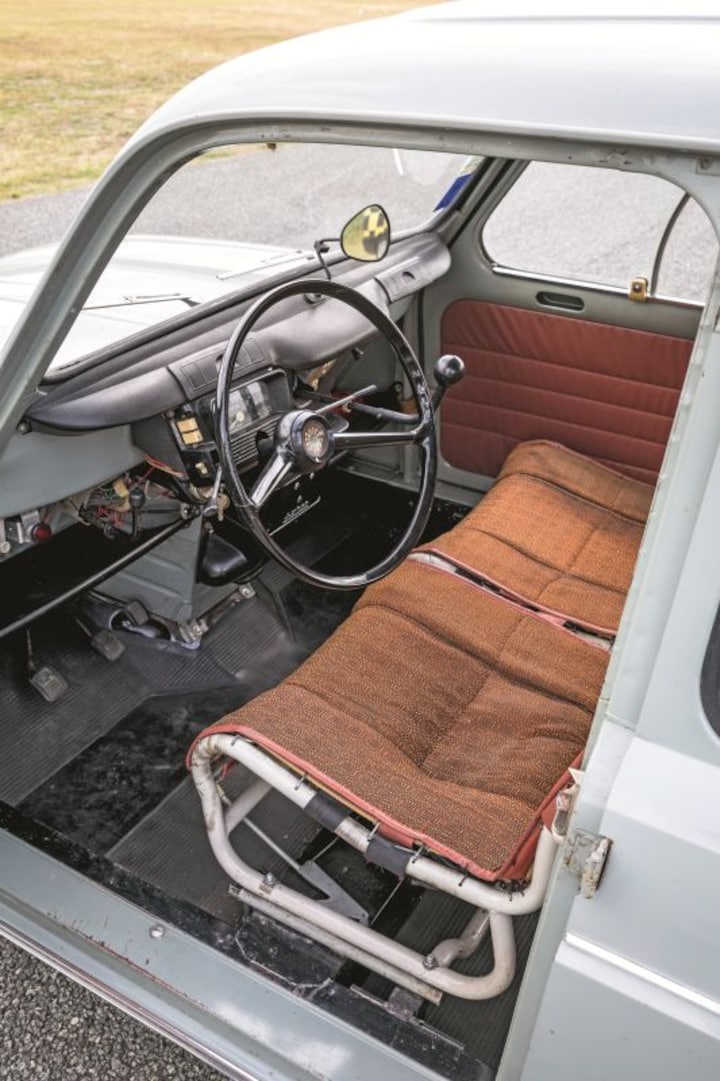
Compared to the pleasantly round 4CV, the R4 with its steep, high sides looks like a businesslike cake tin. That’s it. Pragmatic considerations were paramount during the development. The front-wheel drive is a consistent representative of automotive minimalism and, as a concept, a forerunner of the modern compact class. More than 8 million units were built in 31 years of production.
R4 impresses with space
Today, the space realized on such a small surface makes a big impression. The high luggage compartment with a flat floor of half a meter in length has a station wagon-worthy stowage space of 1,185 liters when the rear seats are folded down (a first in a series production car) and could previously serve just as well as a student love arbor as for a moving van. The cookie tin may seem less appetizing at first glance, but in the end you can do much more with it than with that cute bowler hat, the 4CV.
Technical data
4CV
Engine 4 cyl. In-line, rear lengthwise, side camshaft, 2 kl./cyl., 1 Solex carburettor
Cylinder capacity 748 cc
max. power 15 kW (21 hp) at 4,100 rpm
max. torque 45 Nm at 2,000 rpm
Top speed 100 km/h
Transmission 3 gears manual
Rear wheel drive
Wheel suspension from independent, triangles, coil springs, stab./oscillating axle, coil springs
Brakes from drums all around
Tire size 135R400 73 S
Consumption 5.5-7.0 l/100 km
Tank capacity 27.5 l
Luggage room go
All values are factory specifications
Test values
0-50 km/h 10.3 sec
0-60 km/h 14.9 sec
0-80 km/h 28.9 sec
30-70/50-70km/h 15.8/10.5s
Interior noise level at 50/60 km/h 74/77 dB(A)
Turning circle l/r 9.0/9.2 m
Braking distance 60-0 km/h 22.1 m
Weight 623 kg
max. load 297 kg
(text continues below photo)

The Renault 4 engine viewed from above.
Renault 4
Engine 4 cyl. In-line, longitudinal front, side camshaft, 2 kl./cyl., 1 Solex carburettor
Cylinder capacity 748 cc
max. power 18 kW (24 hp) at 4,500 rpm
max. torque 48 Nm at 2,000 rpm
Top speed 105 km/h
Transmission 3 gears manual
Front wheel drive
Wheel suspension from independent, trailing arms, torsion bars, stab./independent, trailing arms, torsion bars
Brakes from drums all around
Tire size 135/80R13 70 T
Consumption 5.5-6.0 l/100 km
Tank capacity 26 l
Luggage space 295-1,185 l
All values are factory specifications
Test values
0-50 km/h 10.0 sec
0-60 km/h 13.9 seconds
0-80km/h 26.5s
30-70/50-70 km/h 14.4/9.7 sec
Interior noise level at 50/60 km/h 73/75 dB(A)
Turning circle l/r 9.3/9.6 m
Braking distance 60-0 km/h go
Weight 593 kg
max. load 327 kg
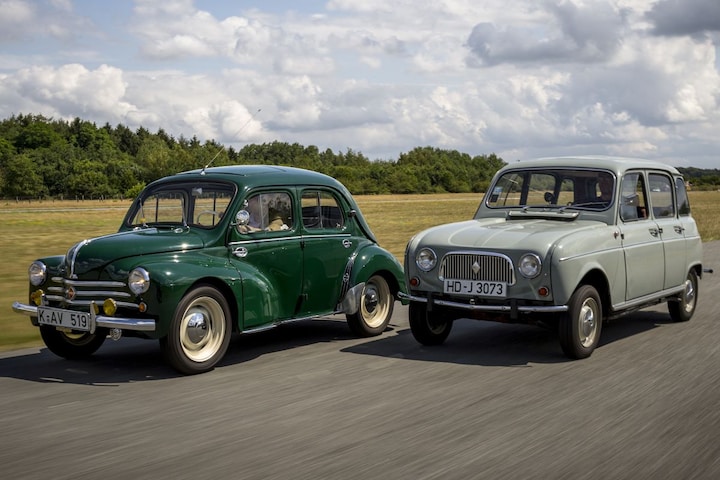
.
– Thanks for information from Autoweek.nl